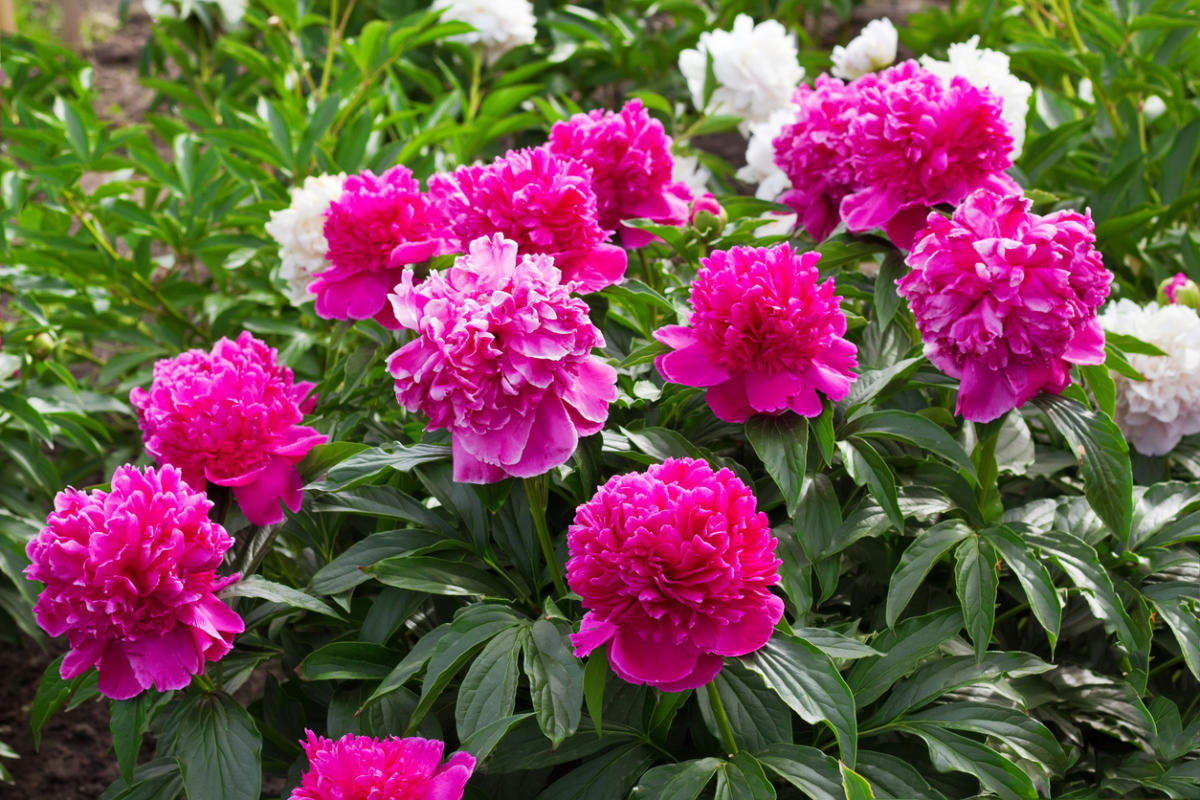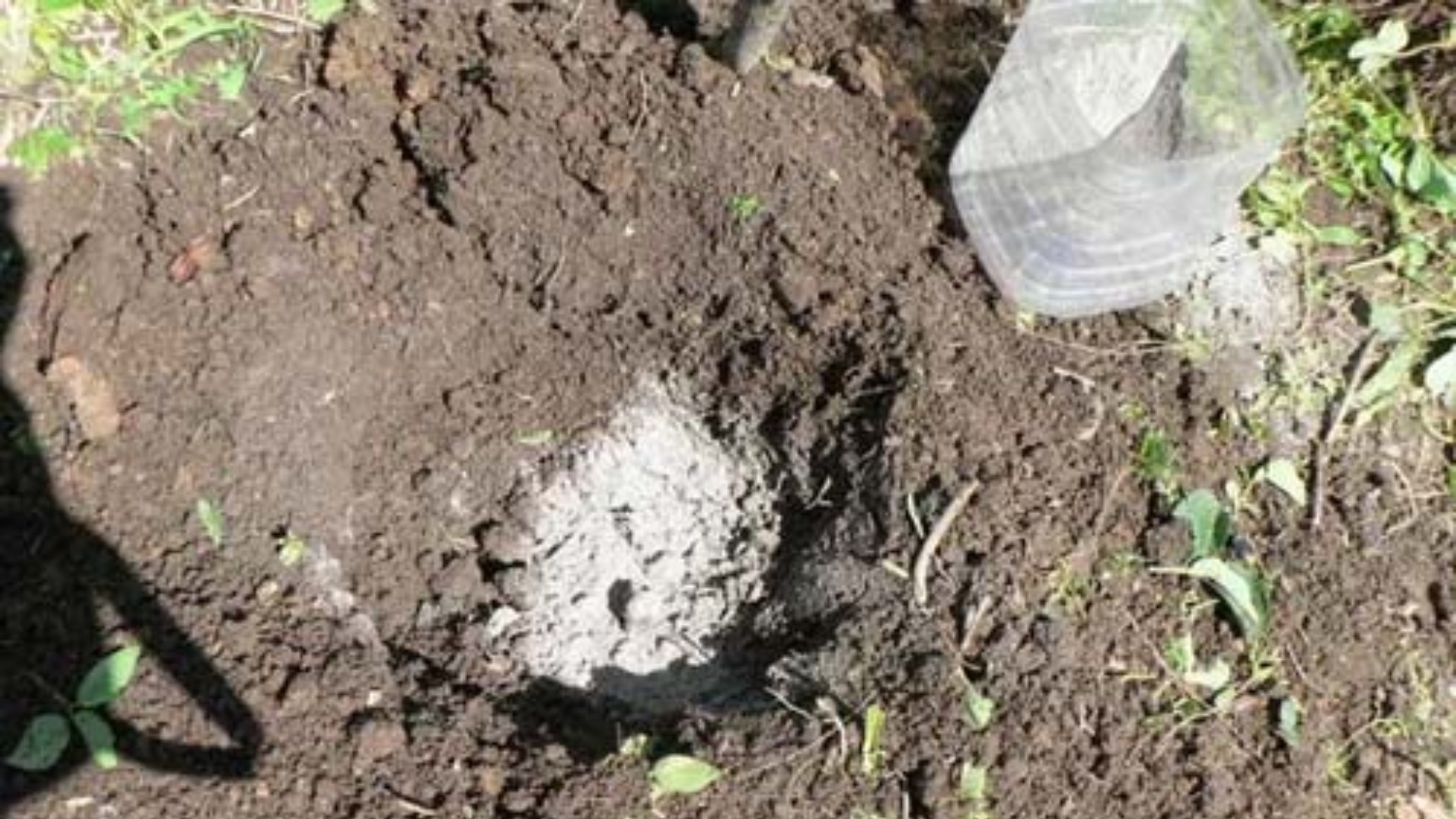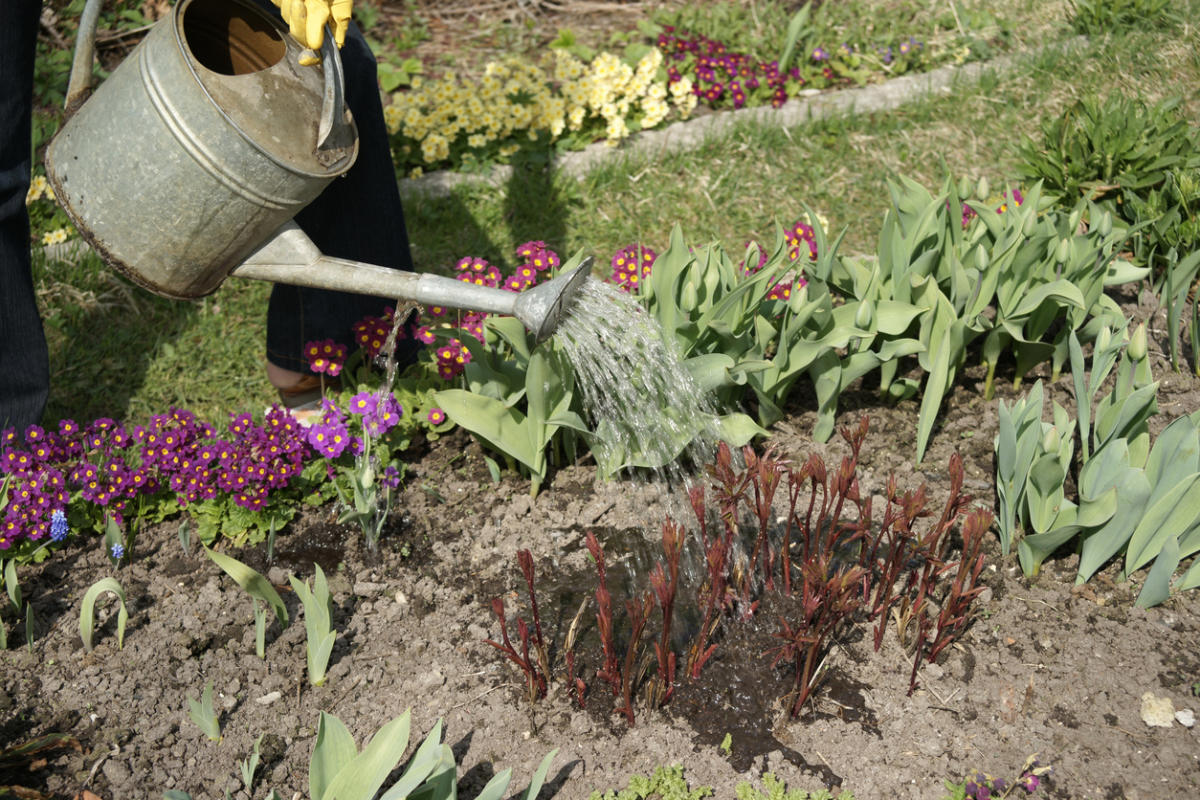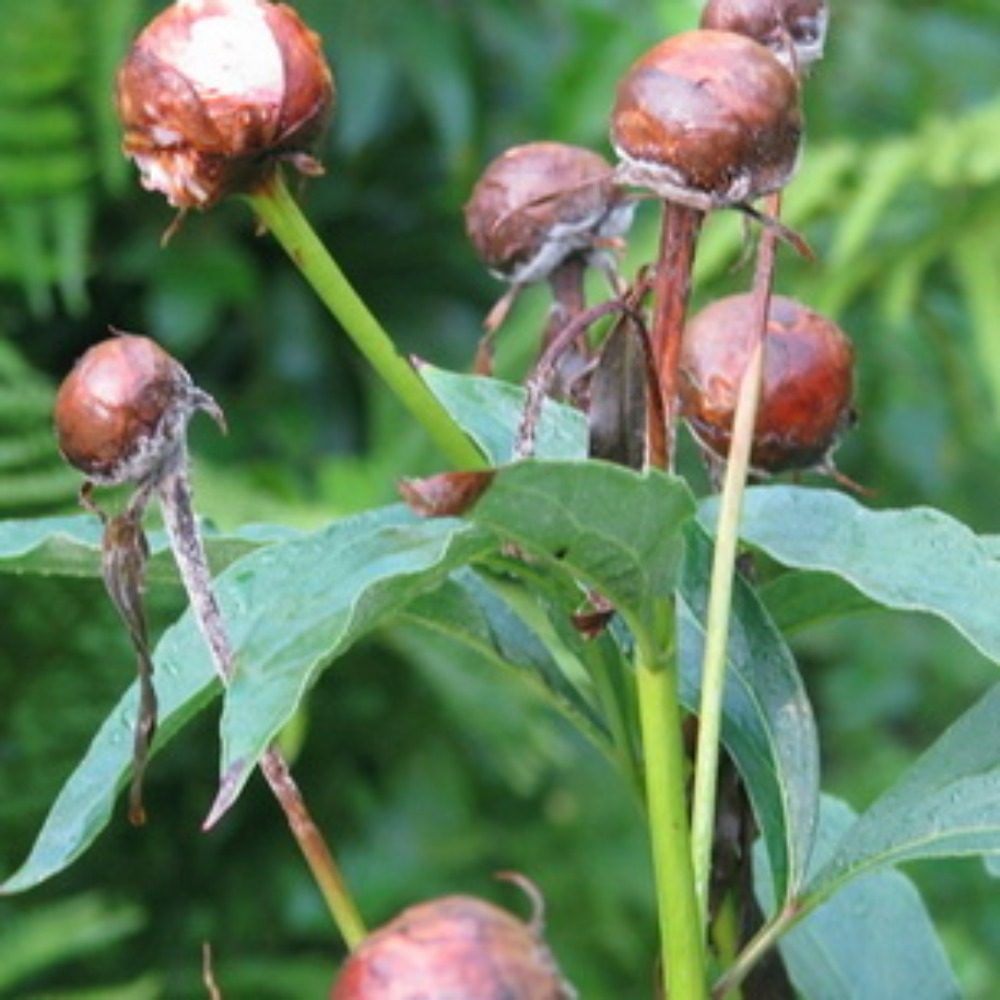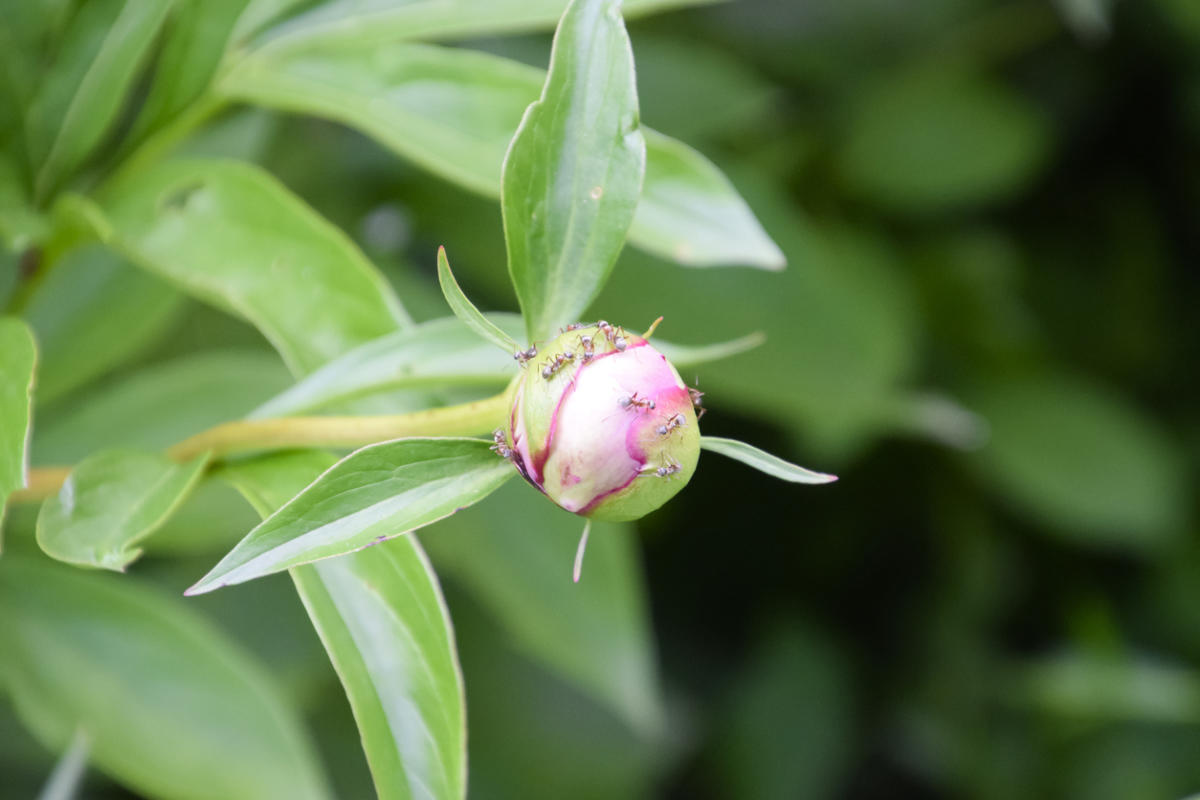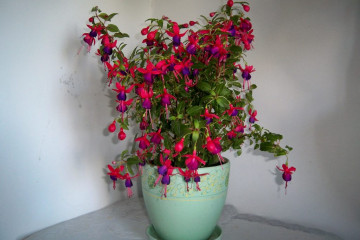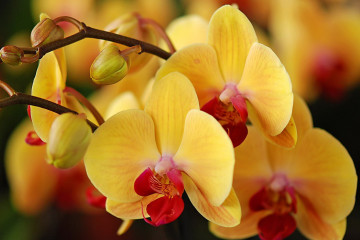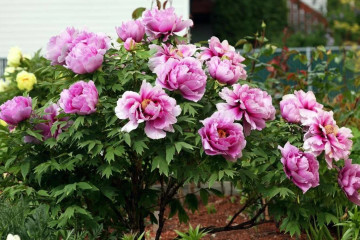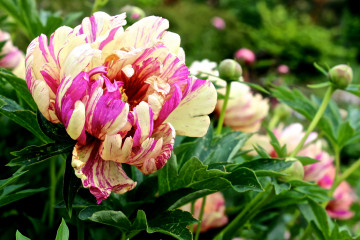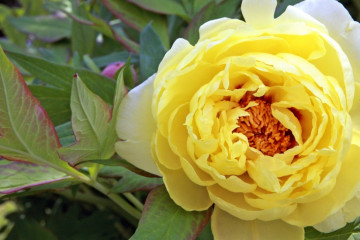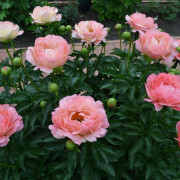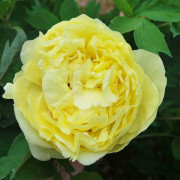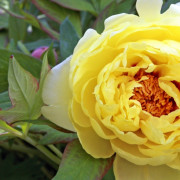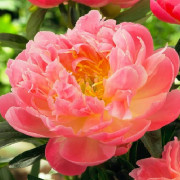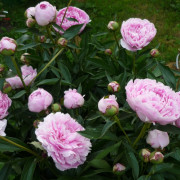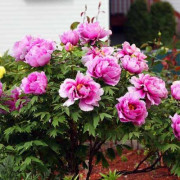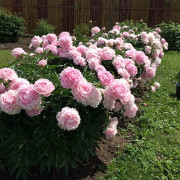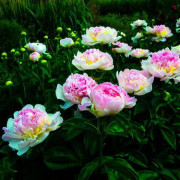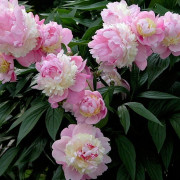Why peonies do not bloom, buds do not develop and how to deal with it
Content:
Peony is a favorite herbaceous shrub of many gardeners. It has high frost resistance and ease of maintenance. But sometimes it happens that the plant does not bloom for many years. This can happen for a number of reasons. Therefore, you should figure out why peonies do not bloom and what needs to be done in each specific case.
General information about how the peony develops and blooms
Peony is a perennial shrub. In herbaceous species of culture, the aboveground part annually dies off for the winter and resumes vegetation with the arrival of spring, and in tree species it remains for the winter. The plant has a powerful root system, going deep up to 1 m. Thanks to this, the shrub is able to provide itself with moisture even during periods of drought, and withstand frosts down to -35 degrees.
In the upper part of the root of the peonies, recovery buds are formed. They have a two-year life cycle. New buds are laid annually at the end of flowering. It is thanks to them that the plant annually grows new shoots and forms buds.
Peonies bloom in the second half of May or June, depending on the species and variety. The plant forms apical buds. Flowering duration is 10-14 days. At the end, fruits are formed, in which the seeds ripen. Closer to autumn, the aboveground part of herbaceous plant species begins to wither, and the growth of new shoots is activated only next spring.
Common Landing Errors Leading to Poor Development and How to Fix
Sometimes the reason why the peony did not bloom at all in due time may be an incorrect planting. This is very important for this culture. Therefore, you should figure out the possible options for the mistakes made.
Wrong location selected
For the full development of the bush and abundant flowering, you must choose a suitable place. This culture prefers to grow in open, sunny places, protected from drafts. In this case, it is necessary that the duration of daylight hours is at least 6-7 hours, especially during the period of bud formation. When a peony is placed in the shade, the shrub actively grows shoots and foliage, but at the same time it blooms poorly or does not form buds at all.
Before planting, you should also determine the level of acidity of the soil. For a peony, 6.5 pH is considered optimal. Exceeding this indicator is one of the reasons why the peony does not grow and bloom. Therefore, experienced gardeners recommend determining the acidity in advance. This will allow you to correct the situation in time. To do this, you will need to add lime to the planting hole and carefully move it with the soil. You can plant a peony after that in six months.
Incorrect fit
The peony can stop blooming even if the delenka is not deepened correctly when planting.
- Too close the location of the root to the soil surface leads to the fact that the recovery buds freeze over in winter and suffer from a lack of moisture in the warm season.
- And a deep planting leads to the fact that only a few buds may bloom or there is no flowering at all.
There are also situations where the landing was initially carried out correctly. But when a shrub is sheltered in the fall, its root system is regularly sprinkled with a thick layer of peat or humus. And in the spring it is not completely removed. And after a few years, its root deepens significantly.
Thorough weeding can also lead to the fact that the shrub stops blooming. In this case, its roots are gradually exposed.
To make the shrub bloom in this case, you just need to dig it up and plant it taking into account the requirements of the culture.
Frequent transplant
The peculiarity of peonies is that the plant, first of all, after planting, directs all its forces to the development of the root system. This takes 2 years.
Therefore, during this period, the shrub not only does not bloom, but also weakly grows shoots. His first flowering occurs only at 3 years old. Therefore, frequent transplanting may be one of the reasons that the shrub does not form buds.
Care mistakes and how to fix them
A provoking factor in why garden peonies do not grow buds may be improper care. In this case, you need to establish the root cause in order to eliminate it.
Bush flooding
This culture does not tolerate prolonged stagnation of moisture in the soil, therefore it cannot be grown on clay soil without first adding sand and peat. Waterlogging can be detected by the dark border on the leaves, which indicates the development of root rot in the peony. You should also take into account the level of occurrence of groundwater. It must be at least 1.5 m.
Too frequent watering can also provoke stagnation of moisture. Peonies are among the plants that are independently capable of providing themselves with moisture, even during dry periods. Therefore, humidification should be carried out only in the absence of rain for a long time. In this case, watering should be 2-3 times a week with the soil getting wet by 20 cm.
Flooding of the bush may be due to its placement in the area where melt water stagnates. Therefore, experienced gardeners recommend planting shrubs on a hill.
Excess or lack of fertilizer in the soil
Peony buds may not bloom as a result of improper feeding. Each stage of shrub development requires specific nutrients.
- In the spring, during the period of active growth of shoots and foliage, the plant needs nitrogen. Therefore, at this stage, it is necessary to use organic matter or mineral fertilizers with a high content of it (urea, ammonium nitrate).
- And at the moment of bud formation and when they begin to open, the peony needs phosphorus and potassium. These components are responsible for color intensity, flower size and frost resistance.
To correct the situation, it is necessary to adjust the feeding. And this means that you need to stop using nitrogen fertilizers during the period of bud formation, and switch exclusively to phosphorus-potassium mixtures or wood ash.
Pruning rules not followed
At the end of flowering, the life cycle of the shrub continues.During this period, the peony restores the energy spent on the formation of buds, prepares for the upcoming winter and lays new recovery buds. Therefore, the leaves play an important role, which provide the plant with additional nutrition.
If you prune the shoots early, this will significantly weaken the bush, and it may stop blooming next year. Therefore, experts recommend not to remove the leaves and stems until they wither. And even when cutting peonies into a bouquet, you need to leave at least 2-3 plates at the bottom.
Launching the root system
Despite the fact that a peony can grow in one place for 50 years, it needs periodic transplants. This is due to the gradual destruction of the main root over time. As a result, several small bushes are formed around.
If you do not divide them in a timely manner and do not remove the rotten shoot, then the shrub will consist of many weakened shoots that will never bloom.
Plant features
The lack of flowering in peonies may be associated with the age of the shrub. Therefore, in some cases, this may be one of the reasons.
Too young bush
In case of planting too small a cut, the first flowering will have to wait a long time. The peculiarity of the peony is that with an insufficiently developed root system, the shrub does not grow shoots and buds.
In this case, you need to be patient and provide the plant with proper care. In gratitude for this, the grown peony will delight with its lush flowering.
Too old
With age, the shrub has the ability to become obsolete. In this case, the flowers of the peony are significantly reduced in size, their number is reduced or they are completely absent. All these signs indicate the need to divide the bush.
To do this, it is necessary to dig up the plant at the end of August, shake off the soil from the roots and wash thoroughly. Then put it in a shaded place for 2 hours, which will allow the root to be divided without much difficulty.
At the end of the time, using a sharp knife, it is necessary to cut the bush into several parts. Each of them should have 3-5 buds of recovery and the same number of well-developed root processes. After this, the delenki must be planted in a permanent place.
External factors
Sometimes the buds on a peony remain unblown due to weather conditions. In such a situation, the gardener is unlikely to be able to do anything to correct the problem. Therefore, it is necessary to select zoned varieties that will be hardly susceptible to unfavorable factors.
Rainy weather during budding
Prolonged rains can cause the petals in the buds to start to rot. Therefore, the plant will never be able to dissolve them. But this will not affect the flowering in the next season. Therefore, it remains to be patient and hope that next time the rain will not be able to interfere.
Too dry weather
A lack of moisture in the soil can also provoke premature wilting of buds. In this case, you need to increase the watering of the shrub. To do this, use settled water with a temperature of +20 degrees. Watering is carried out every other day with the soil getting wet up to 20 cm.
Also at this time, sprinkling should be applied in the evening to replenish the evaporated moisture in the leaves. And in order to prevent overheating of the roots, the soil under the bush should be mulched with peat or humus.
Diseases and pests
The reason for the lack of flowering can be the defeat of the bushes by fungal diseases and pests.
Possible problems:
- Ants.These insects attack bushes during bud formation, which leads to their deformation. To scare away, it is recommended to spray the peonies with a garlic solution.
- Slugs. This pest damages shrubs during prolonged rainy weather. Slugs feed on buds and young leaves. As a preventive measure, it is necessary to sprinkle the soil at the base of the peonies with tobacco dust or wood ash.
- Root rot. The disease develops with prolonged stagnation of moisture. In this case, the leaves and buds of the shrub lose their elasticity. This occurs as a result of metabolic disorders in tissues. To save you need to dig up the plant, remove the affected areas and transplant to a new place.
- Powdery mildew. The disease develops at high humidity and temperature. It appears as a white bloom on leaves and buds. For treatment, it is necessary to spray the shrub with Skor or Topaz.
Knowing why peonies do not bloom, you can determine what to do in each case. Therefore, if such a problem arises, it is necessary to familiarize yourself with the common mistakes made during planting and further care. Since they are most often the main reasons.
